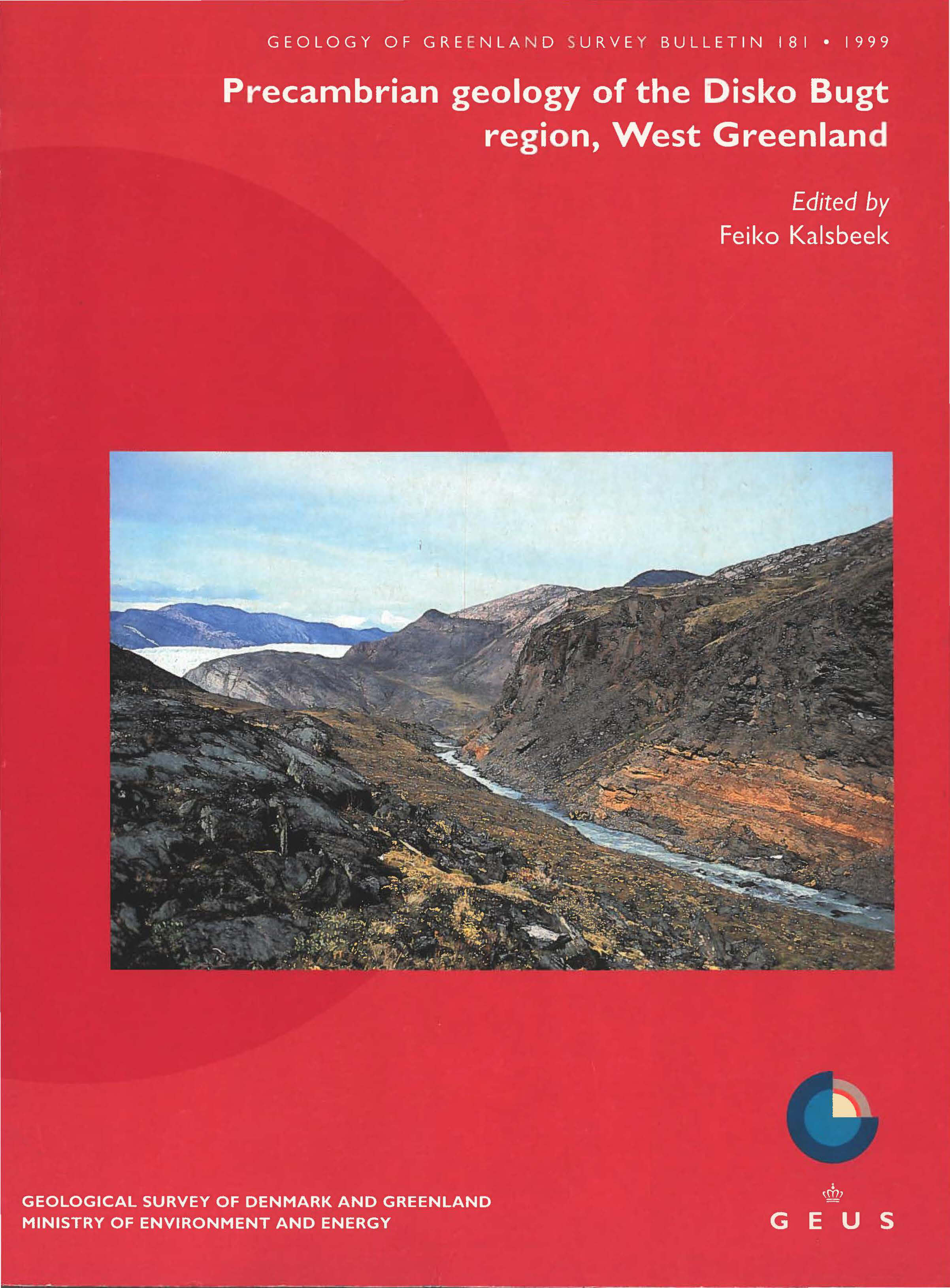Gold mineralisation at Eqi, north-east Disko Bugt, West Greenland
DOI:
https://doi.org/10.34194/ggub.v181.5121Keywords:
alteration, Archaean, Disko Bugt, gold, supracrustal rocks, West GreenlandAbstract
Gold mineralisation at Eqi, north-east Disko Bugt, West Greenland, is hosted in Archaean (c. 2800 Ma old) supracrustal rocks; the latter are divided by a thrust into a lower volcanic unit and an upper sedimentary and volcaniclastic unit. The lower volcanic unit comprises three parts: a basal pillowed greenstone sequence, an acid volcanic complex, and an upper mafic igneous complex. Intensive hydrothermal activity resulted in extensive carbonatisation and sericitisation, which is most intense just above a system of acid feeder dykes within the basal greenstone sequence. Primary enrichment in gold took place during pervasive hydrothermal alteration, and the gold is mainly located in carbonate-altered rocks. Remobilisation of gold occurred during formation of later quartz veins in the altered zone; these quartz veins have gold contents of up to 60 ppm. The geological setting, geochemistry and formation of the gold mineralisation at Eqi is similar to many Archaean gold deposits in the Abitibi belt of Canada.
Downloads
Published
Issue
Section
License
This article is distributed under a CC-BY 4.0 licence, permitting free redistribution and reproduction for any purpose, even commercial, provided proper citation of the original work. Author(s) retain copyright over the article contents.


